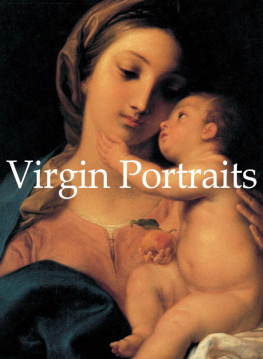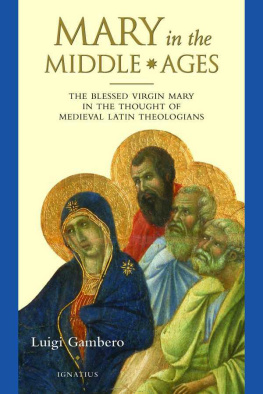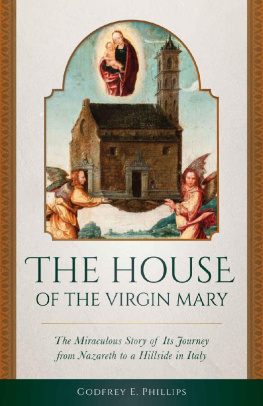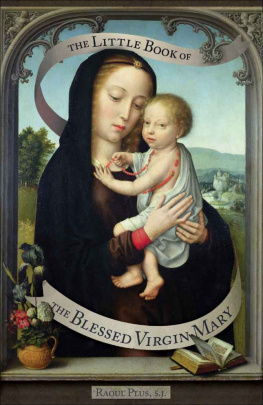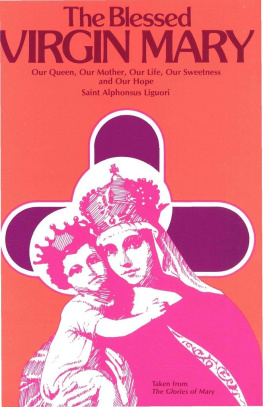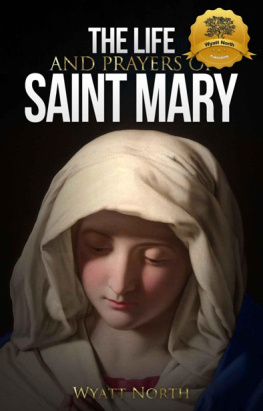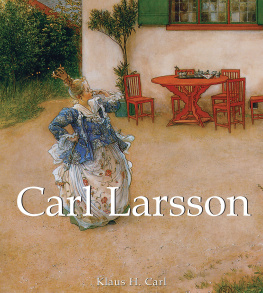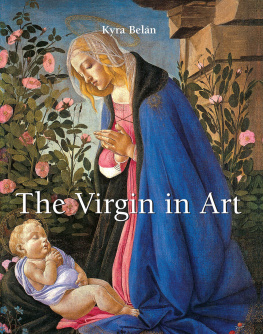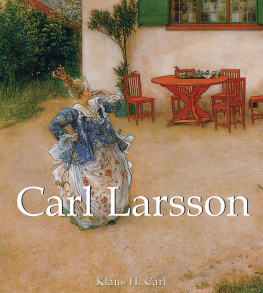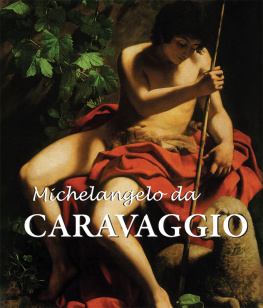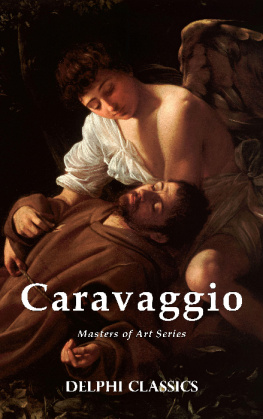Layout:
Baseline Co Ltd.
61A-63A Vo Van Tan Street
th floor
District 3, Ho Chi Minh City
Vietnam
ISBN: 978-1-78160-951-4
Confidential Concepts, worldwide, USA
Parkstone Press International, New York, USA
Banco de Mxico Diego Rivera & Frida Kahlo Museums Trust.
Estate Kingdom of Spain, Gala-Salvador Dali Foundation / Artists Rights Society, New York, USA/VEGAP
Alice Neel Estate
All rights reserved
No part of this publication may be reproduced or adapted without the permission of the copyright holder, throughout the world. Unless otherwise specified, copyrights on the works reproduced lies with the respective photographers. Despite intensive research, it has not always been possible to establish copyright ownership. Where this is the case we would appreciate notification.
Foreword
During the Renaissance, Italian painters would traditionally depict the wives of their patrons as Madonnas. The artists would often overstate the beauty of their models, rendering them more beautiful than they actually were. The contemporary representation of the Mother of Christ, however, tended to remain unchanged. With the passing of time, Mary gradually lost some of her spiritual characteristics and became more humane, more accessible to human sentiments.
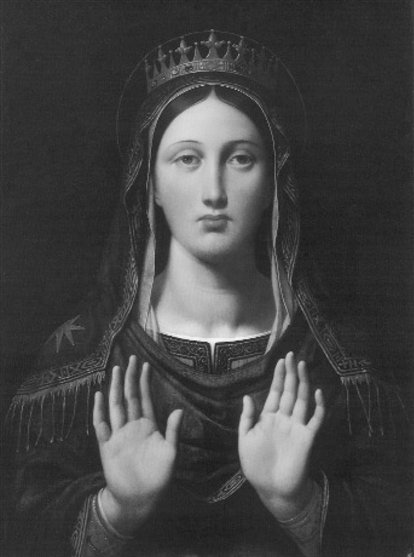
The Crowned Virgin
Jean-Auguste-Dominique Ingres, 1859
oil on canvas, 69 x 50 cm. Tamenago Gallery, Tokyo
Contents
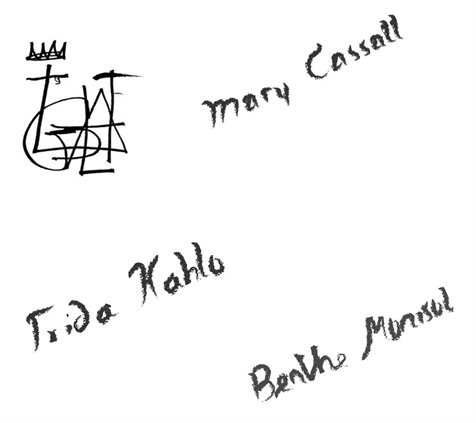

| The image of the Madonna has been embedded in the arts of the Western World for nearly two thousand years. She embodies the purest form of unconditional love and is perceived as the compassionate and forgiving nurturer of all Christian people. The Madonna is also seen as the loving mother, and the protector of all humanity. |
Mary with the Child Jesus between Constantine and Justinian
Anonymous, Xth century lunette mosaic Hagia Sophia, Constantinople (Istanbul) |
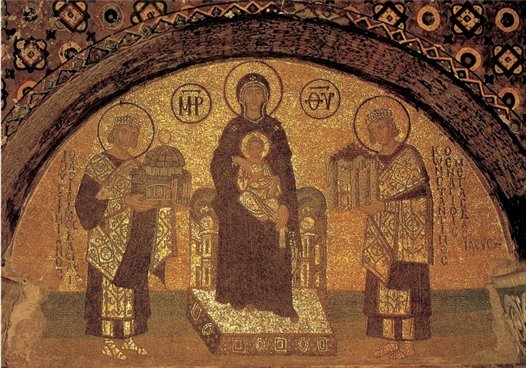

| Her followers believe that only she can fully understand human grief, passions and happiness; she forgives, mediates, and consoles, and she is the connection between human beings and their God. She has been venerated as the Queen of Heaven, the Mother of All, and as the embodiment of compassion. |
The Virgin of Vladimir
Anonymous, XIIth century tempera on wood, 78 x 55 cm Tretiakov Gallery, Moscow |
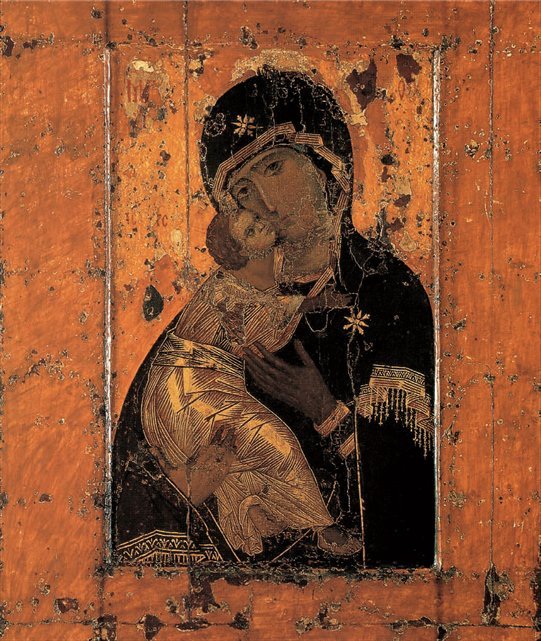

| She is seen as selfless, humble, and caring, and represents the feminine spirituality within Christianity. For many centuries the Madonna has inspired thousands of artists who laboured innumerable hours creating her images using different styles, materials, and techniques. |
Rucellai Madonna
Duccio di Buoninsegna, 1285 tempera on wood, 450 x 290 cm Uffizi, Florence |
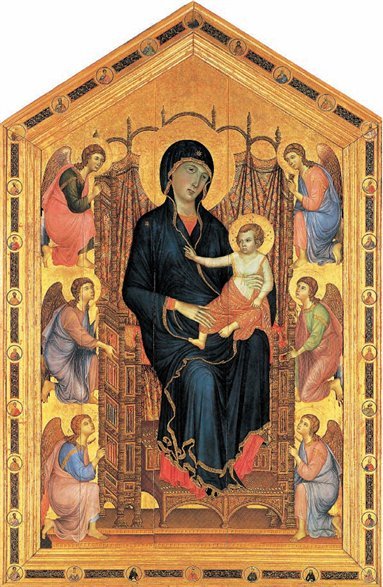

| This huge body of artwork, a cultural legacy of major proportions, represents a social system that still dominates the world. Art museums, galleries, palaces and private collections are filled with her icons. Through the centuries, images of the Virgin were created according to the religious interpretations of beliefs, myths, iconography and symbolism prevalent at the time. |
Madonna of Mercy
Simone Martini, 1308-1310 tempera on wood, 154 x 84 cm Pinacoteca Nazionale, Siena |
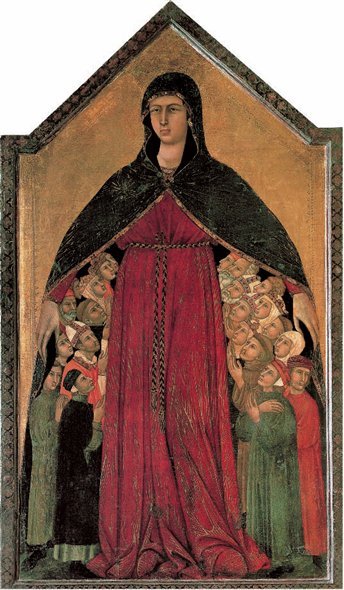

| The presence of Mary in the heart of Western civilization has a long theological history of transformation. Scholars concur that during early Christianity there were other paramount feminine faces of spirituality, such as Sophia, who was understood to be the feminine aspect of the complex Christian God. |
The Annunciation, with Saints Ansanus and Margaret and Four Prophets
Simone Martini and Lippo Memmi, 1333 tempera on wood, 184 x 210 cm Uffizi, Florence |


| Hagia Sophia represented the Divine Wisdom and was celebrated as a co-creator, together with the Father, the Son and the Holy Spirit. At the beginning of Christianity, particularly in Eastern Europe, the Holy Ghost was understood as female. Yet, it usually was Sophia who was celebrated as the feminine aspect of the divine. |
The Virgin and Child
Lorenzo Veneziano, 1356-1372 painting on wood, 126 x 56 cm The Louvre, Paris |
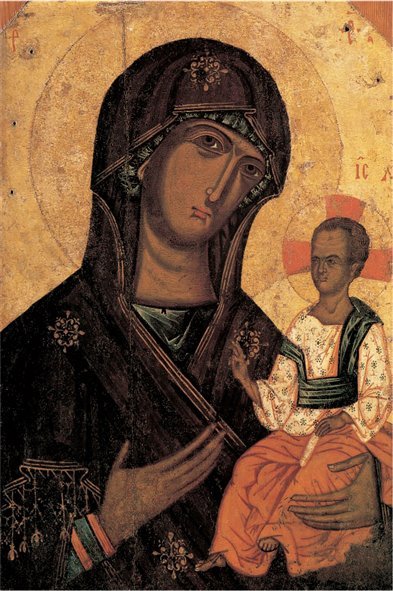

| As Sophias popularity among the dogma-generating clergy waned, the popularity of the Virgin Mary, the Mother of God, gradually increased. During the sixth century, the presence of the Mother of God was reaffirmed within the Christian religious dogma all over Europe, including the Byzantine Empire. |
Madonna and Child
Luca Signorelli, c.1390 oil on wood, 170 x 117.5 cm Uffizi, Florence |

